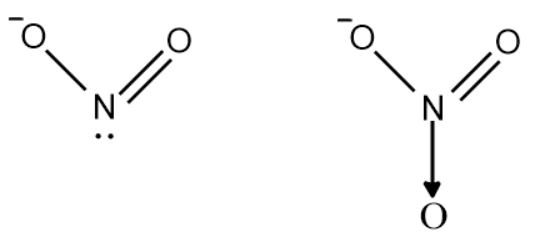Question
Question: A mixture is known to contain \(N{{O}_{3}}^{-}\) and \(N{{O}_{2}}^{-}\). Before performing ring test...
A mixture is known to contain NO3− and NO2−. Before performing ring test for NO3− the aqueous solution should be made free of NO2−. This is done by heating aqueous extract with:
(A) conc. HNO3
(B) dil. HNO3
(C) urea
(D) zinc dust
Solution
An attempt to this question can be made by determining the difference between the two ions under consideration. Now evaluate the reagents mentioned in the options and their possible reactions with the two ions, NO3− and NO2−. Based on this you can determine the reagent that will react with just NO2− and remove it from the solution.
Complete Solution :
We will draw the expanded structure of nitrite ion as well as nitrate ion.
- The oxidation state of nitrogen in nitrite is +3 and +5 in case of nitrate.
Concentrated and dilute HNO3 do not react with either NO3− or NO2− ion in the solution.

- Urea reacts with NO2− and reduces nitrogen to its molecular form. Nitrogen along with other gases are released into air separating it from the nitrate solution to perform a ring test.
We will write the reaction below for better understanding.
CO(NH2)+HNO2→2N2↑+CO2↑+3H2O
- In the above reaction we see that the products, nitrogen and carbon dioxide are in gaseous form and thus do not stay in the solution. This reaction is exothermic and thus will occur spontaneously without the supply of any extra energy.
So, the correct answer is “Option C”.
Note: The reason why urea is used to separate nitrite from the mixture is because nitrite ions interfere with nitrate ions during the brown ring test. Nitrite ions too react with the brown ring test reagent and thus needs to be eliminated from the solution before performing the ring test.
